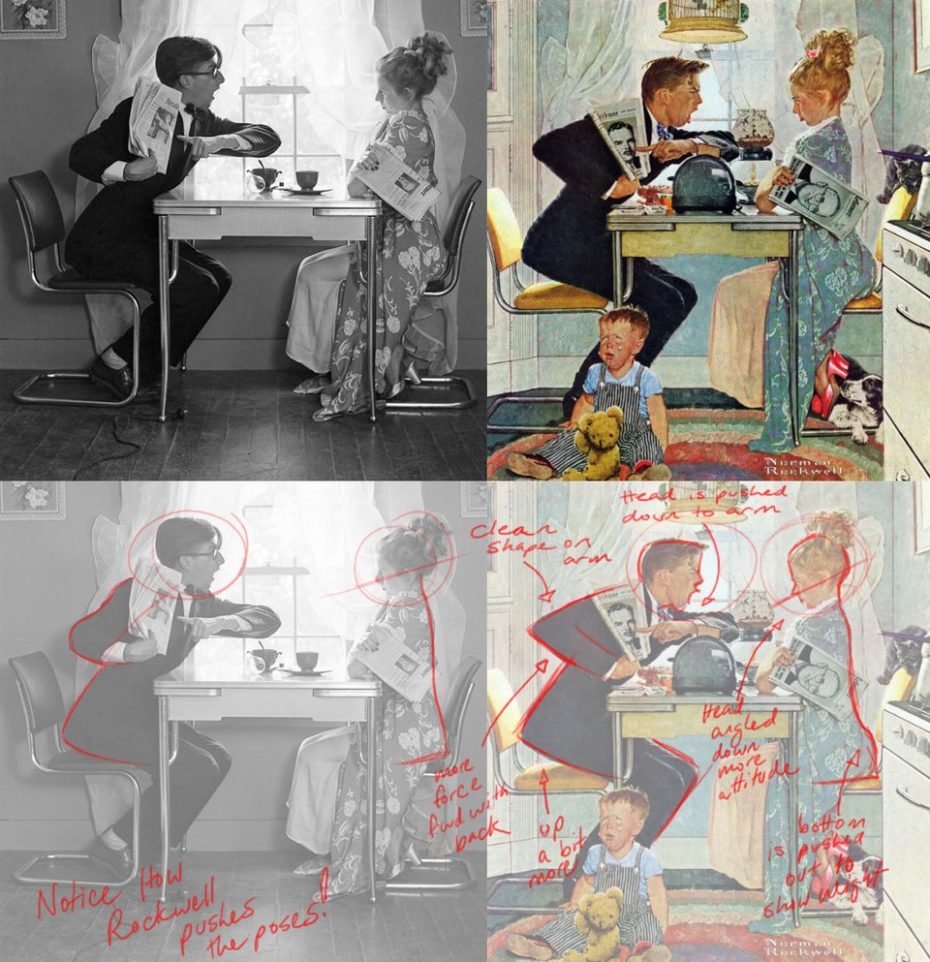
More than 40 years after Norman Rockwell’s death, the question of whether his paintings are realistic or unrealistic remains open for debate. On one hand, critical opinion has long dismissed his Saturday Evening Post-adorning visions of American life as sheerest fantasy. “A little girl with a black eye, an elderly woman saying grace with her grandson, a boy going to war: Rockwellian scenes represent a certain sentimental America — an ideal America, or at least Rockwell’s ideal,” says a 2009 NPR story on his work.
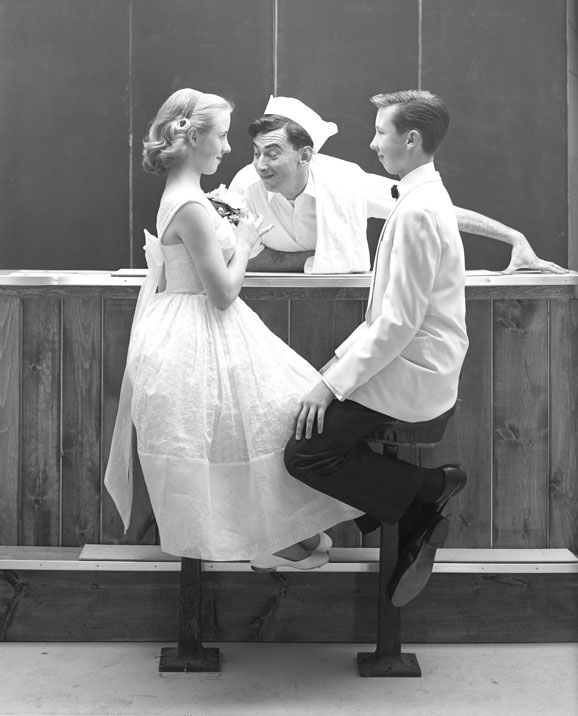
On the other hand, if Rockwell’s admirers give him a pass on this sentimentality, his detractors often turn a blind eye to his obvious technical mastery. Say what you will about his themes, the man might as well have been a camera. Indeed, his process began with an actual camera. According to that NPR piece, he “used photos, taken by a rotating cast of photographers, to make his illustrations — and all of his models were neighbors and friends,” residents of his small town of Stockbridge, Massachusetts.
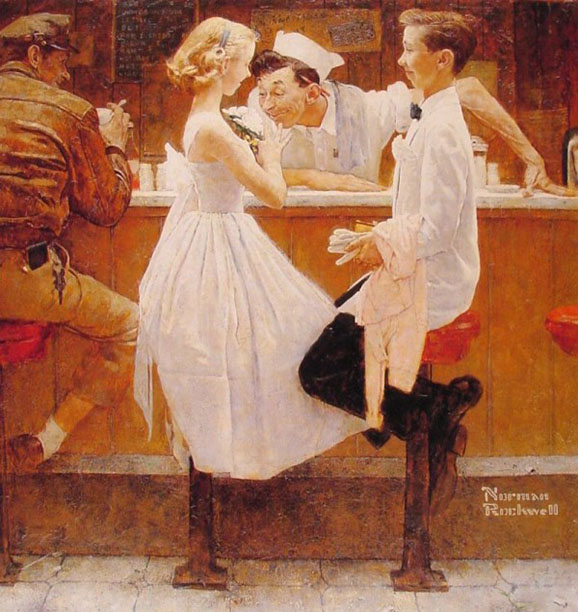
The cameramen included a German immigrant named Clemens Kalischer: “An artist-photographer himself, Kalischer was at odds with the tracing techniques and saccharine subject matter in Rockwell’s work. After all, Rockwell never painted freehand, and almost all of his paintings were commissioned by magazines and advertising companies.”
But “although he may not have clicked the shutter, Rockwell directed every facet of every composition,” as you can see by examining his paintings and reference photos together, featured as they’ve been on sites like Petapixel.
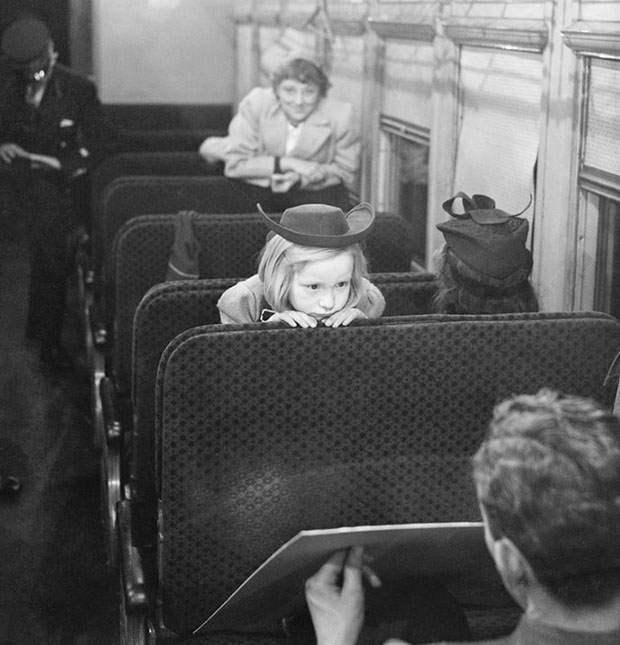
At Google Arts & Culture, you can scroll through a short exhibition of Rockwell’s late work on race relations in America that reveals how he had not just one but many photographs taken as source material for each painting, which he would then combine into a single image. This quasi-cinematic “editing” process brings to mind the “storyboarding” of Edward Hopper, who stands alongside Rockwell as one of the most American painters of the 20th century.
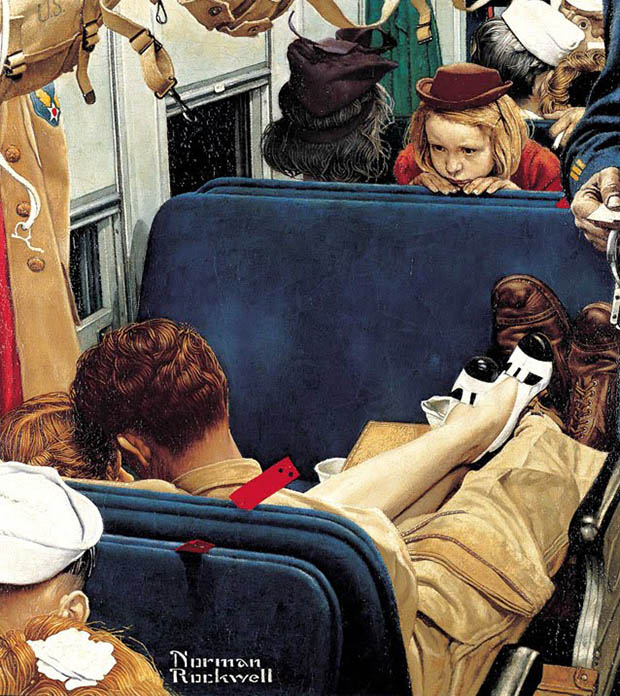
But while Hopper gave artistic form to the country’s alienation, Rockwell — whom history hasn’t remembered as a particularly happy man — created an “American sanctuary others wished to share.” And though neither Hopper nor Rockwell’s America may ever have existed, they were crafted from the pieces of American life the artists found everywhere around them.
Related Content:
Norman Rockwell Illustrates Mark Twain’s Tom Sawyer & Huckleberry Finn (1936–1940)
Norman Rockwell’s Typewritten Recipe for His Favorite Oatmeal Cookies
Yale Launches an Archive of 170,000 Photographs Documenting the Great Depression
Based in Seoul, Colin Marshall writes and broadcasts on cities, language, and culture. His projects include the Substack newsletter Books on Cities, the book The Stateless City: a Walk through 21st-Century Los Angeles and the video series The City in Cinema. Follow him on Twitter at @colinmarshall or on Facebook.


Camera obscura
He really was a genius!
Mr Rockwell’s subjects were not just from his hometown. His painting The County Agent were of a family living in north east Indiana in the county of Jay. It was also done from a photo taken by Mr Rockwell himself. Thank You
I love news about my favorite artists! Thank you❤
I have always and will always be a huge fan of Norman Rockwell. He presented a fantasized version of life but one that could be achived if only we were kinder to one another.
I lived in that era but was very young. It would be very hard for people on today’s technical world to understand those times without the complexities of today. It was not perfect but Rockwell did paintrealistically as the time presented them but with a humorous vein. It was a far more ideal and calmer world without “things” that causedangst and chaos. I know. I lived it. I miss the America I used to know. It was in general a kinder world and there really were dear hearts and gentle people…like the song.
While I agree that Rockwell’s illustrated world was too sentimental to have ever been real, I quibble with the statement that Hopper’s wasn’t. What scene in any Edward Hopper painting actually strains credulity? I enjoy Rockwells work, but it has the authenticity of an 80’s sitcom. Hopper’s painting sentimentalize nothing.
I love all of Rockwell’s pictures of Boy Scouts! I have a few prints in my house.
I love his work.He was a genius, creative. I am a watercolor artist. What do l
need to do to get permission to copy one of his paintings, to use for a
Christmas card
I agree, However, I believe we were rather sheltered from “reality” back in those days. There was rampant and blatant racism and gender inequality. There was economic inequality. The world was portrayed as white and largely male. A lot of folks were suffering out of our eye and ear shot. Though, as a child, I remember playing out in the world, unsupervised ’til dusk. And no one worried…